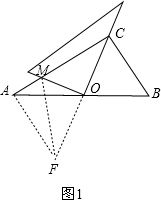Understanding the Power of E=mc虏: A Detailed Exploration
Albert Einstein’s equation, E=mc虏, is one of the most famous and influential formulas in the history of science. It encapsulates the relationship between energy (E) and mass (m) and the speed of light (c) squared. This article delves into the intricacies of this equation, its implications, and its significance in various fields of study.
What is E=mc虏?

The equation E=mc虏 can be broken down into its components. ‘E’ represents energy, ‘m’ represents mass, and ‘c’ represents the speed of light. The speed of light in a vacuum is approximately 299,792 kilometers per second (186,282 miles per second). When squared, this value becomes an extremely large number, which emphasizes the immense amount of energy that can be released from a small amount of mass.
Understanding the Speed of Light

The speed of light is a fundamental constant in physics. It is the maximum speed at which information or energy can travel. This speed is so fast that it takes light approximately 8.3 minutes to travel from the Sun to Earth. The speed of light is crucial in E=mc虏 because it determines the amount of energy that can be released from a given mass.
Implications of E=mc虏

E=mc虏 has several implications, both theoretical and practical. One of the most significant implications is the conversion of mass into energy. This concept is fundamental to nuclear reactions, such as those that occur in the Sun and in nuclear power plants. The equation also explains the energy released in radioactive decay and the energy stored in atomic nuclei.
| Field of Study | Implications of E=mc虏 |
|---|---|
| Physics | Explains the energy released in nuclear reactions and radioactive decay. |
| Astronomy | Helps explain the energy output of stars and the formation of black holes. |
| Engineering | Enables the development of nuclear power plants and other technologies. |
| Medicine | Facilitates the use of radiation therapy in cancer treatment. |
Energy and Mass Conversion
One of the most fascinating aspects of E=mc虏 is the conversion of mass into energy. This process is known as mass-energy equivalence. According to the equation, a small amount of mass can be converted into a significant amount of energy. For example, one gram of mass is equivalent to approximately 9.0 x 10鹿鈦?joules of energy. This conversion is the basis for nuclear power generation and other applications.
Applications of E=mc虏
E=mc虏 has numerous applications in various fields. Some of the most notable applications include:
-
Nuclear Power Generation: E=mc虏 is the foundation for nuclear power plants, which generate electricity by converting mass into energy through nuclear reactions.
-
Radiation Therapy: E=mc虏 explains the energy released in radioactive decay, which is used in cancer treatment to target and destroy cancer cells.
-
Astronomy: E=mc虏 helps explain the energy output of stars and the formation of black holes, providing insights into the universe’s structure and evolution.
-
Particle Physics: E=mc虏 is essential in understanding the behavior of subatomic particles and the fundamental forces of nature.
Conclusion
E=mc虏 is a profound equation that has revolutionized our understanding of the universe. It highlights the incredible power that lies within matter and the vast potential of energy. By exploring the implications and applications of this equation, we gain a deeper appreciation for the wonders of physics and the endless possibilities that lie ahead.


